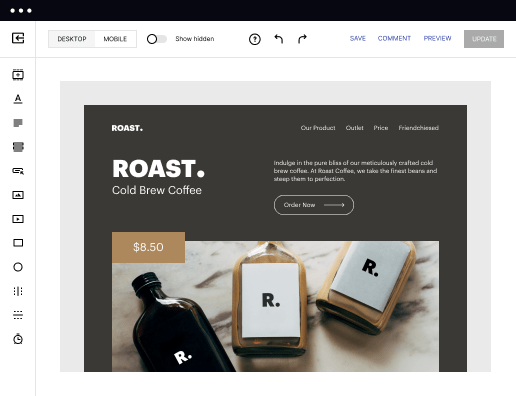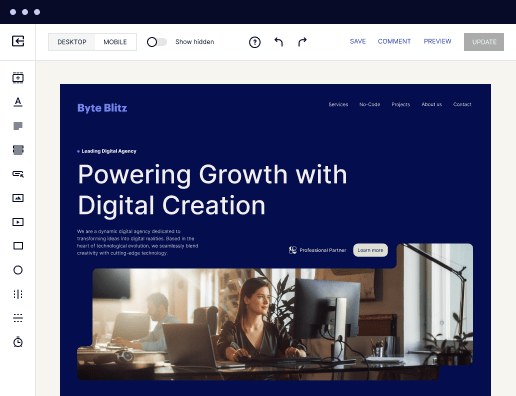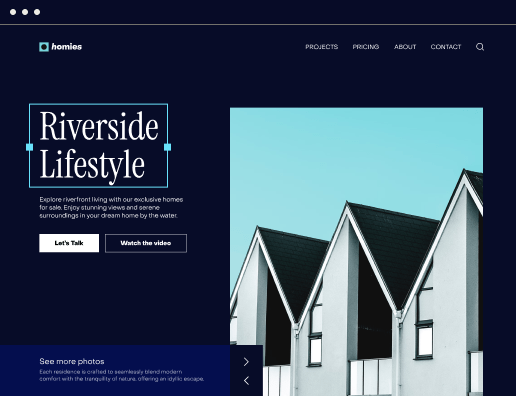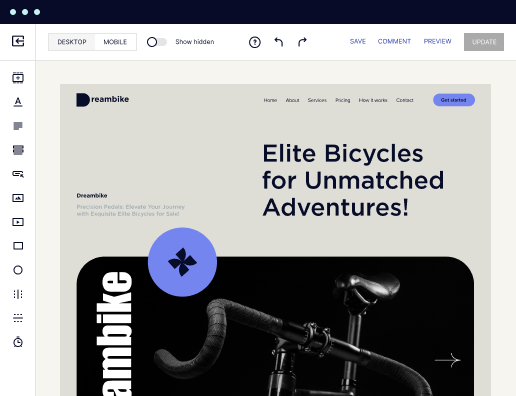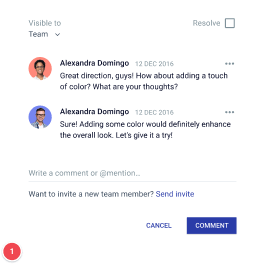Make your tailored blog page for Reporting analysts
Empower Reporting analysts with Instapage to deliver impactful blog page experiences and boost conversions.
Create impactful blog pages for reporting analysts with Instapage
Creating a blog page for reporting analysts involves understanding how to effectively present data and insights. With Instapage, marketers can leverage flexible and user-friendly templates designed specifically for this purpose. By harnessing a library of over 100 conversion-focused layouts, professionals can generate pages that not only inform but also convert, enabling higher brand trust and customer loyalty.
Step 1: Define your audience and goals
Before diving into the creation of your blog page, it's critical to identify your target audience and the goals of your content. Focus on segments such as business services, tech/SaaS, and financial services in the USA. Understanding their specific needs allows for tailored content that resonates deeply and drives engagement.
- Identify key stakeholders: Understand who your readers are to customize content appropriately.
- Define primary goals: Are you looking to educate, generate leads, or build brand awareness?
- Segment your audience: Tailor messages for different verticals like government or education.
Step 2: Choose the right Instapage layout
Selecting the appropriate layout is crucial for showcasing your analytical reports. Instapage offers a vast collection of customizable templates that cater to various data presentation styles. Here are some options:
- Data-heavy layouts: Perfect for detailed analytics and charts.
- Minimalist designs: Focuses on key insights without distractions.
- Engaging visual layouts: Integrates images and infographics that attract attention.
Step 3: Optimize for conversions
To ensure your blog page for reporting analysts not only attracts visitors but also converts them, it's essential to optimize your content. Utilize Instapage's built-in tools for A/B testing and heatmaps.
- Implement A/B testing: Experiment with headlines, CTAs, and content structure.
- Use heatmaps: Analyze how users interact with your content to identify improvement areas.
- Monitor analytics: Keep track of key metrics to assess the performance of your page.
In conclusion, developing an effective blog page for reporting analysts with Instapage streamlines the process of creating valuable content that engages and converts audiences.
Get started today with Instapage to build your compelling blog for reporting analysts—maximize your landing page effectiveness and grow your conversion rates with ease.
Get more out of Make your blog page for Reporting analysts
Improve your Quality Score with quick load technology for landing pages
Increase conversions with content that aligns with your ads and audiences
Achieve maximum ROI by scaling your marketing initiatives
Leading the way in building high-performing landing pages





FAQs
See how to make your blog page for reporting analysts in action
Ready to skyrocket conversions?
Supercharge your ad campaigns with high-performing landing pages.
Get started


